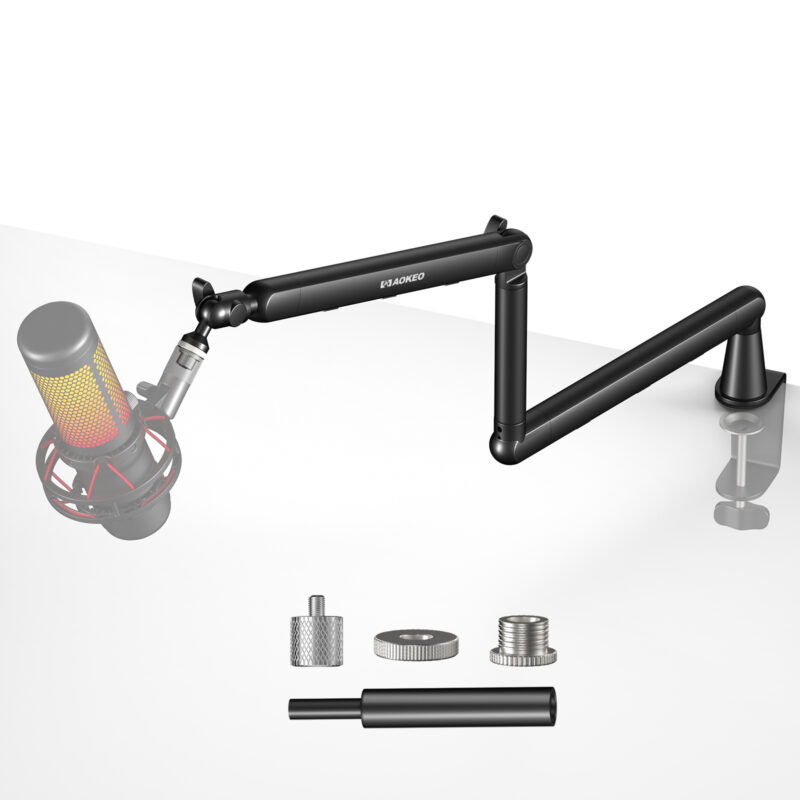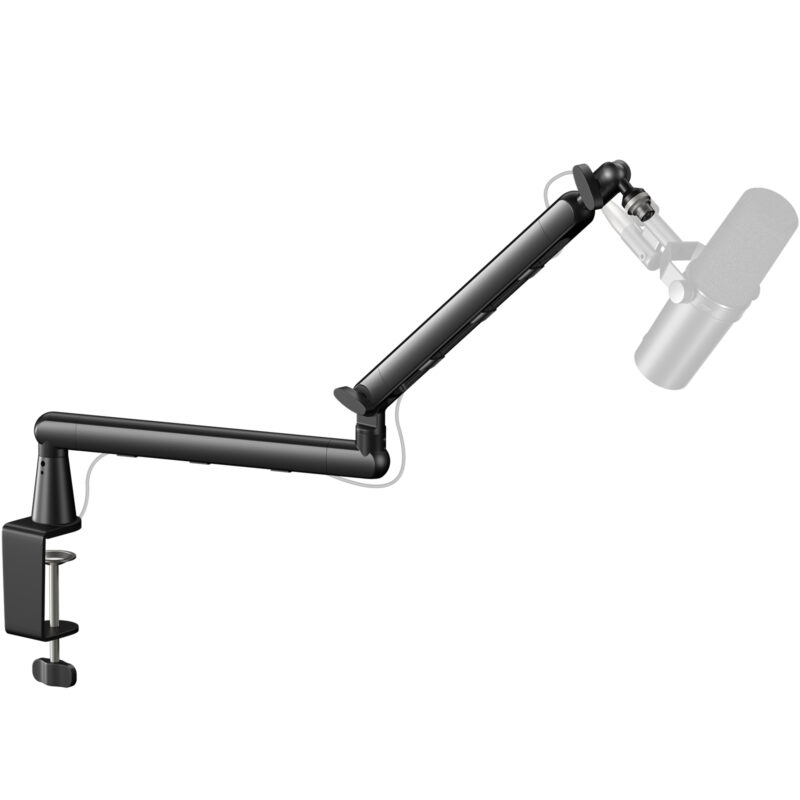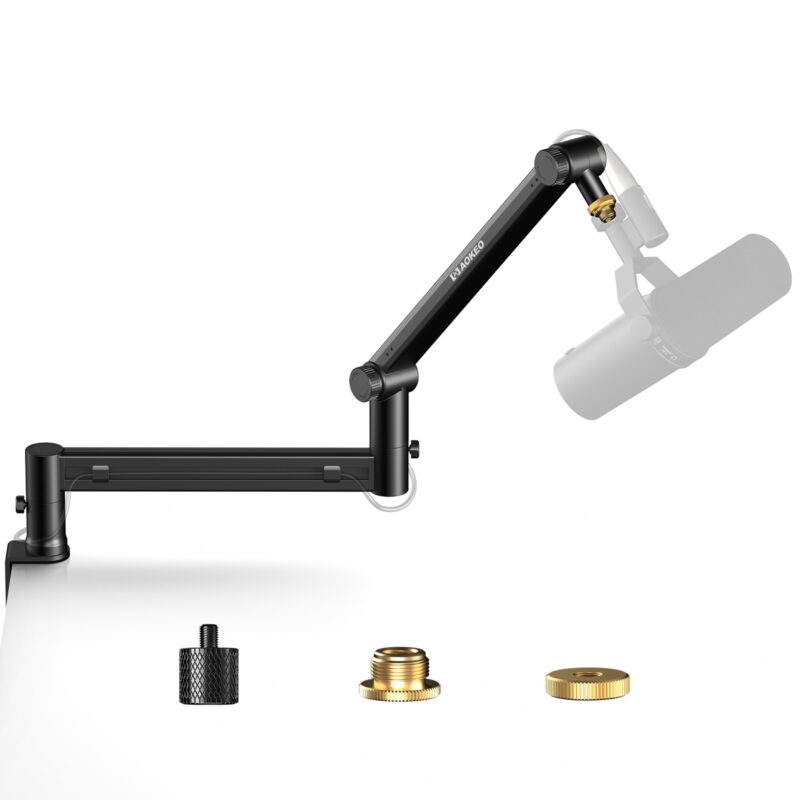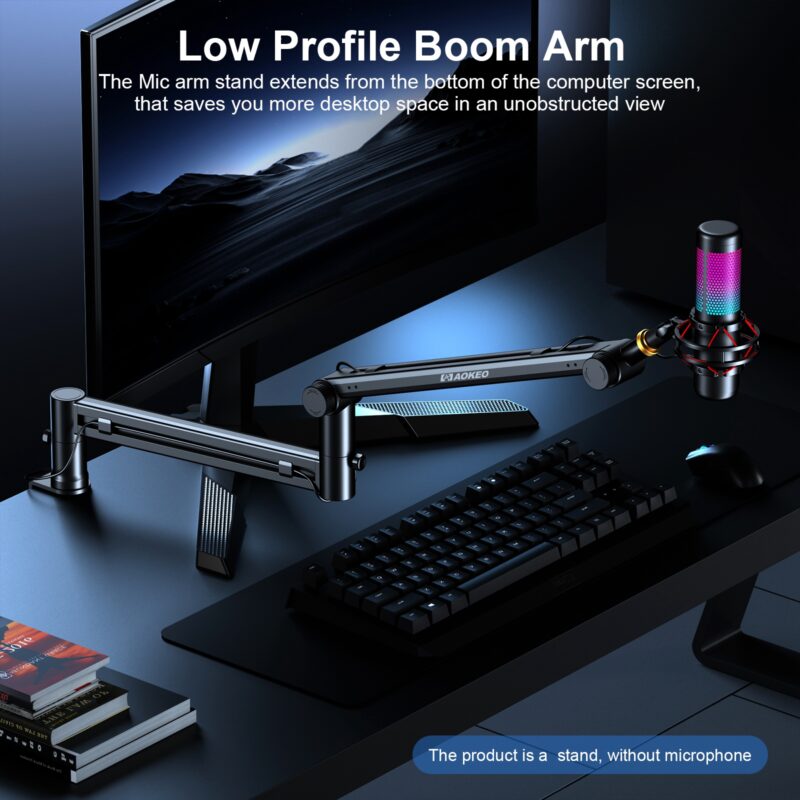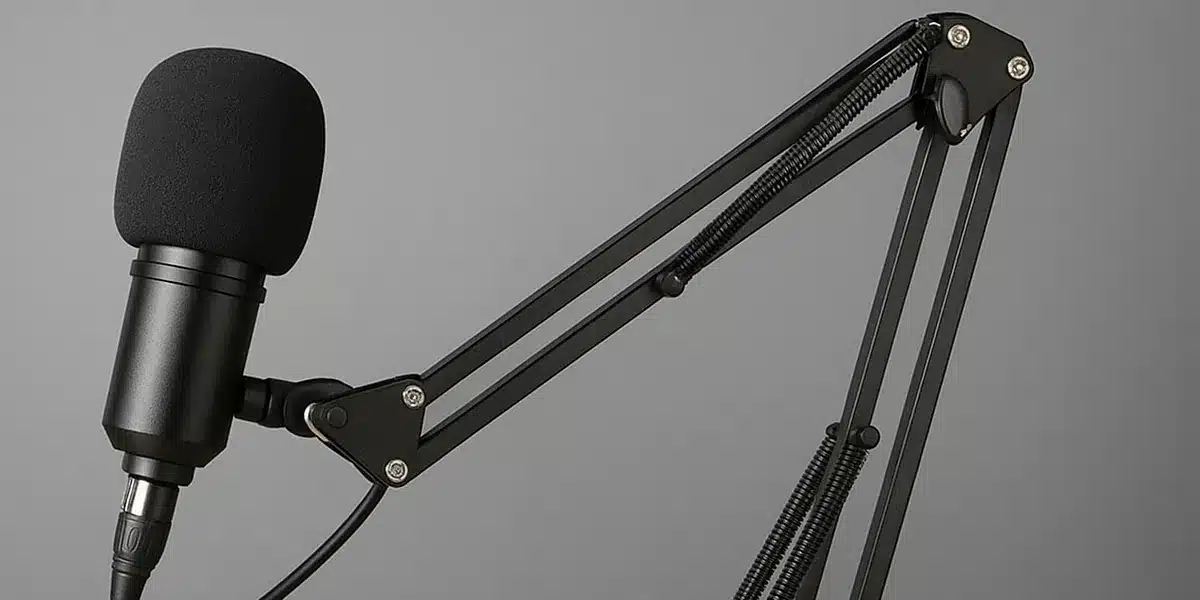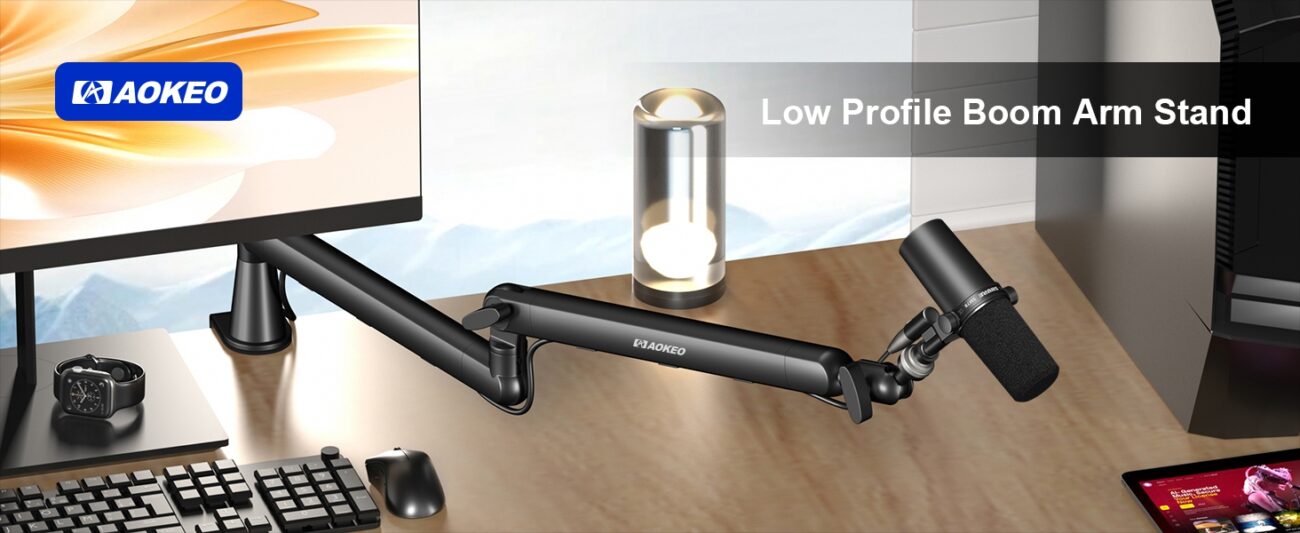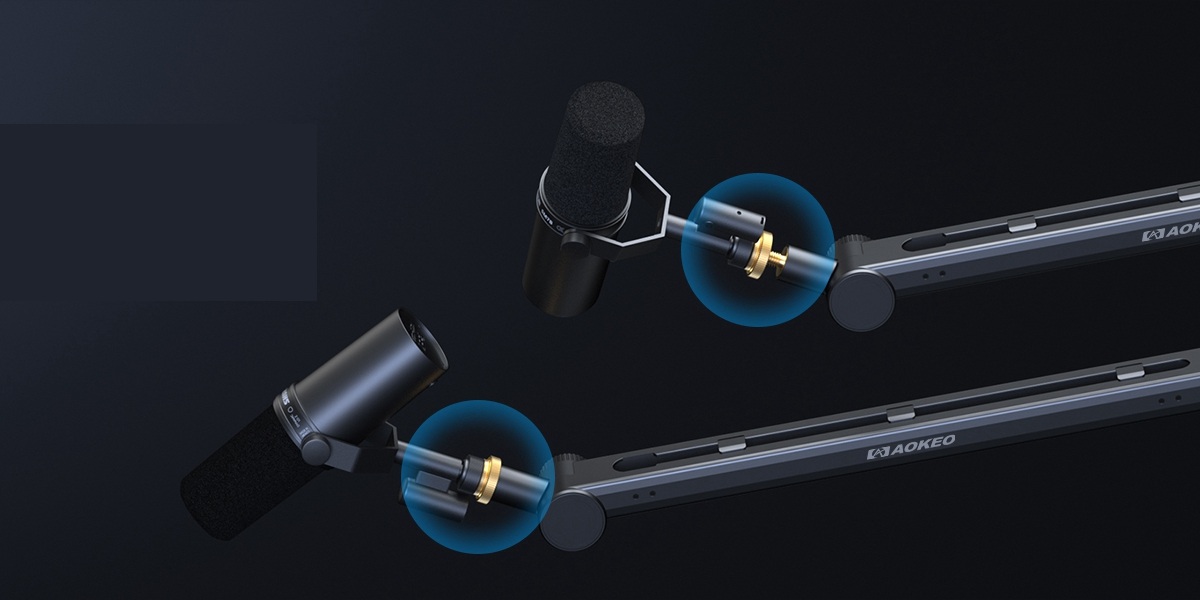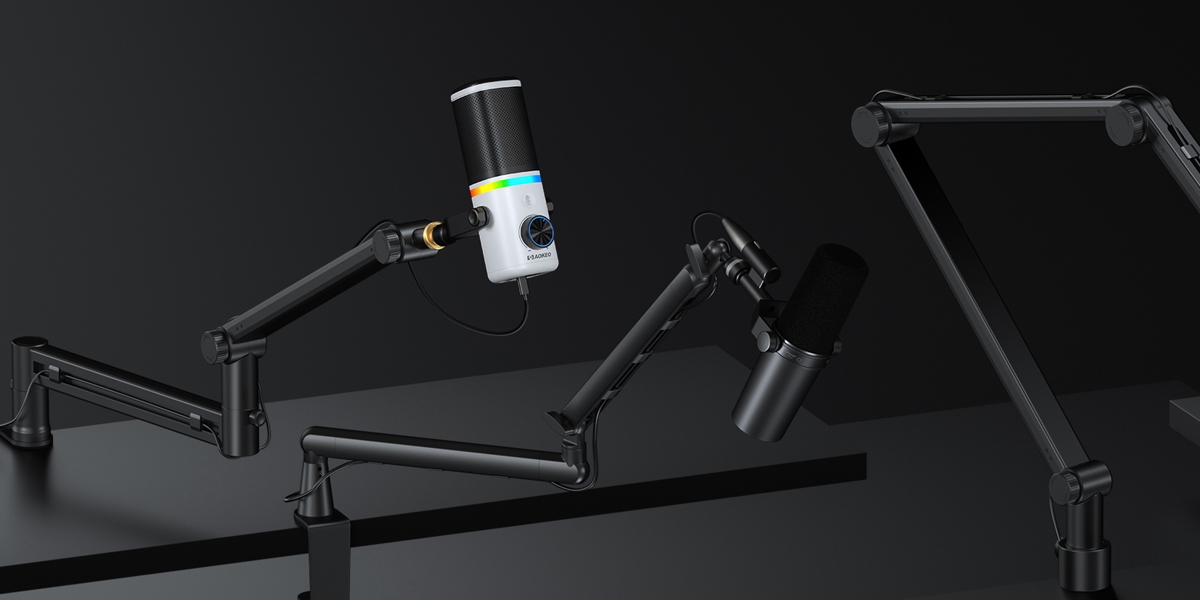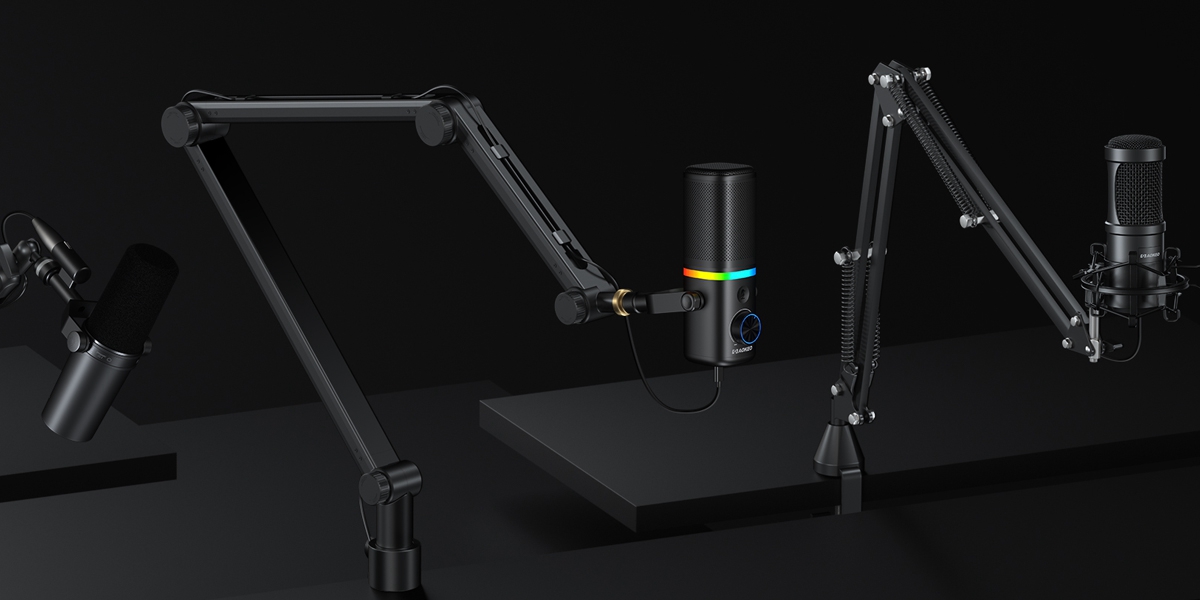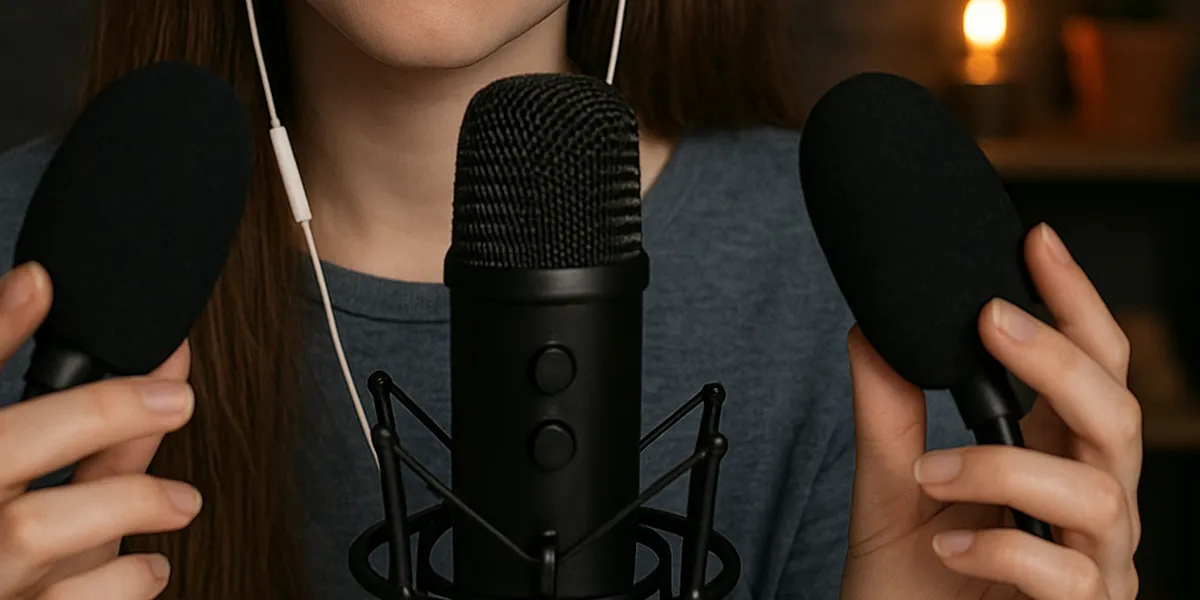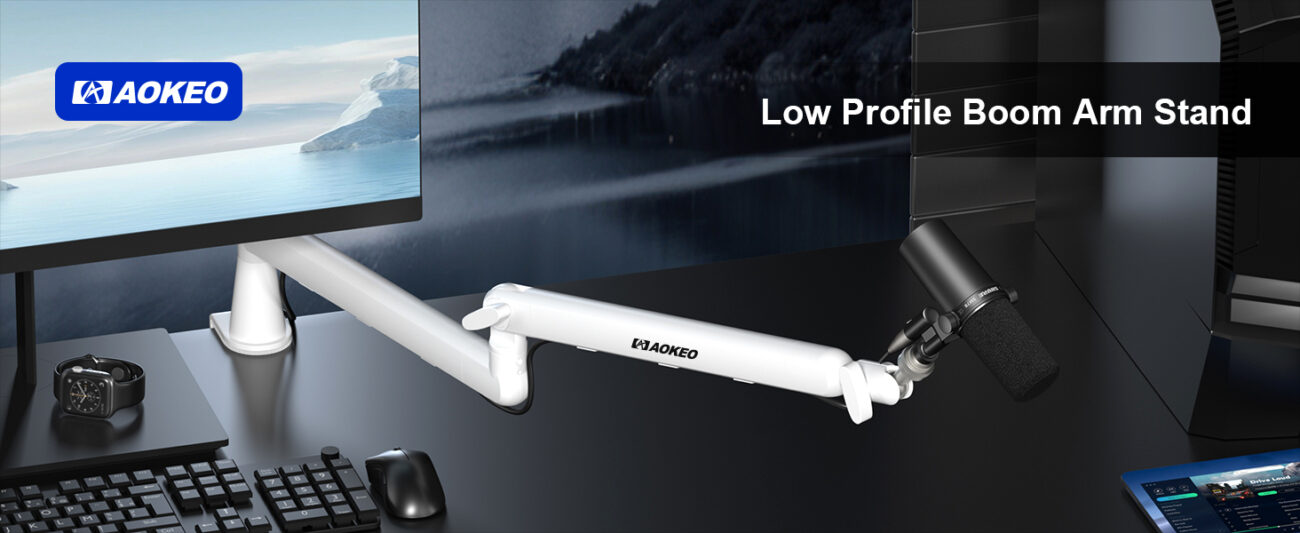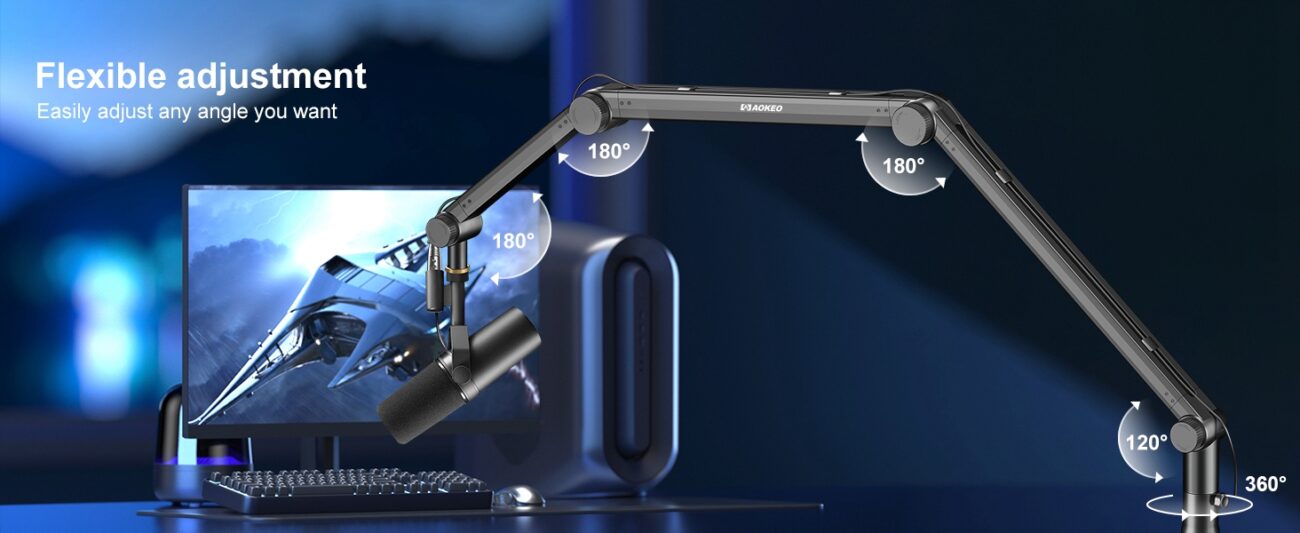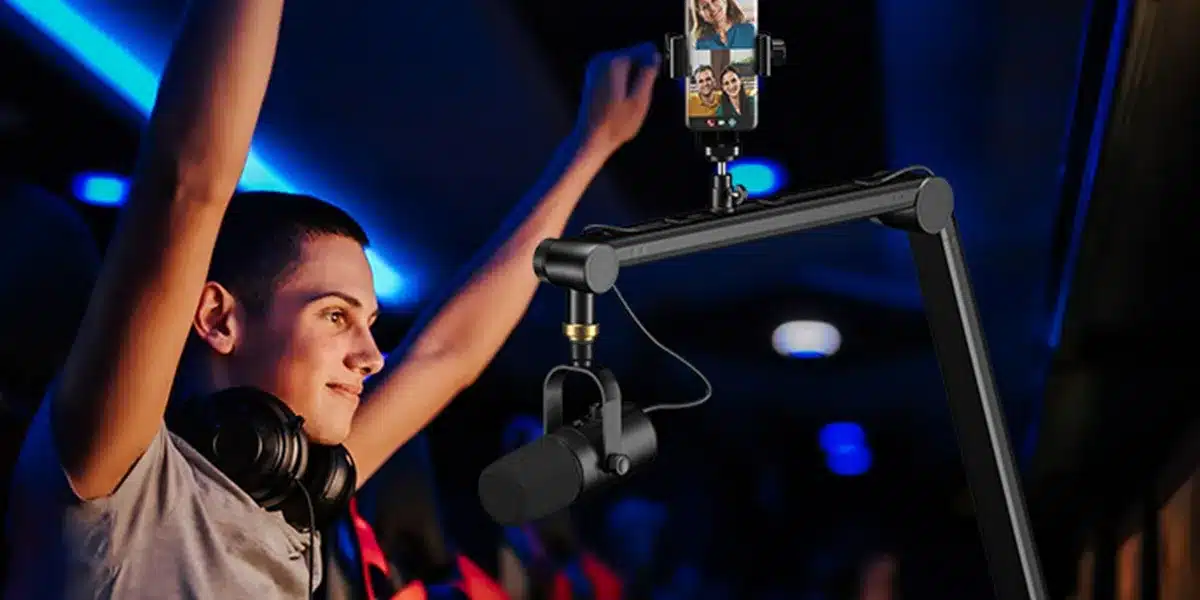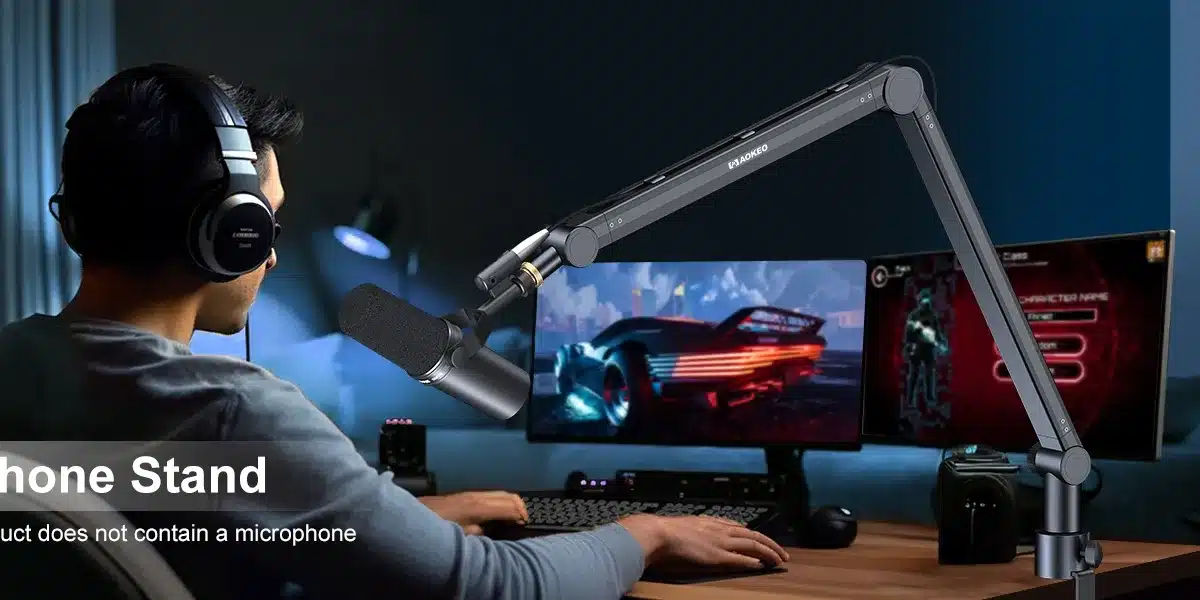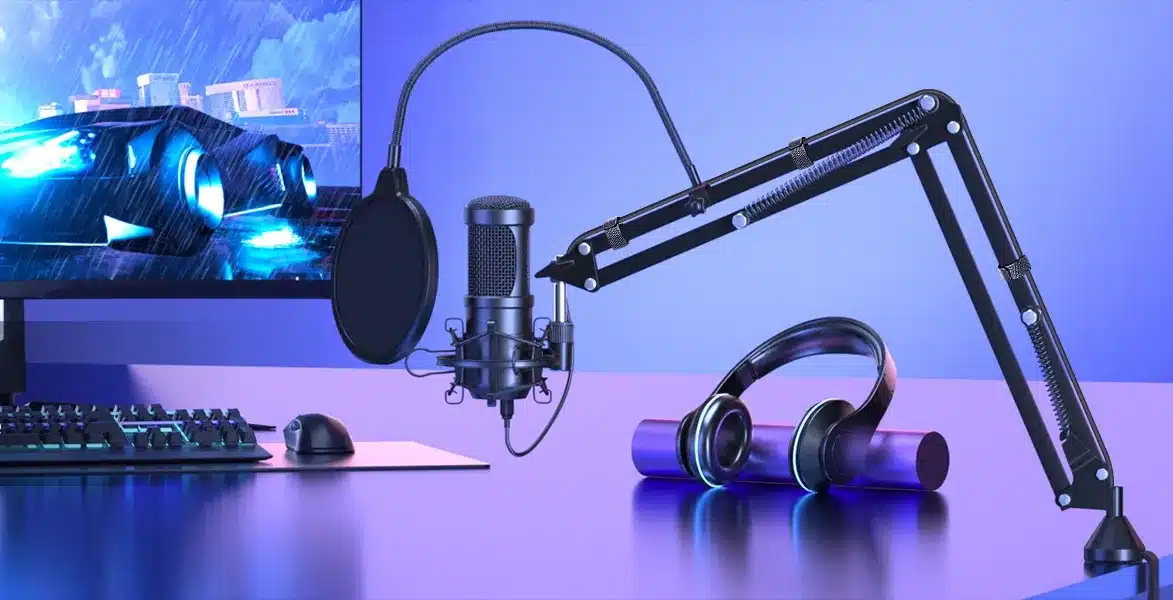Is a Mic Desk Arm Worth It for Beginners
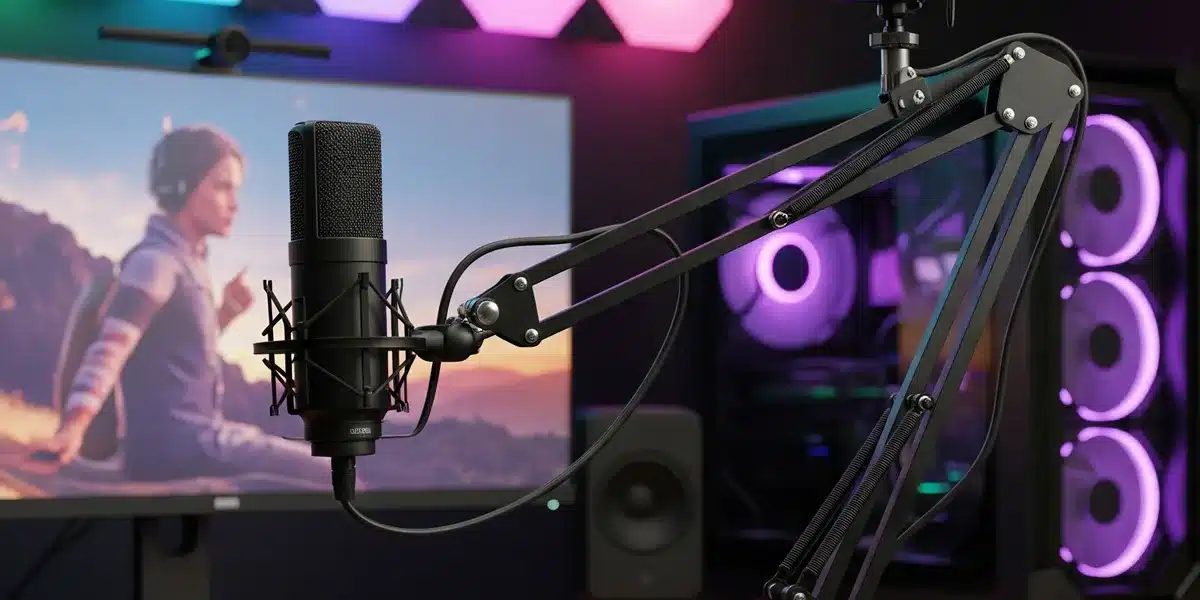
You want to sound clear and look professional from the start. A mic desk arm helps you get better audio, keeps your workspace tidy, and gives you more freedom to move your mic. Many beginners choose a desktop stand for quick setup, but a mic desk arm can give you a real boost as you grow.
Key Takeaways
A mic desk arm helps your sound by holding the microphone still. It also stops noise from hitting the desk. This makes your audio clearer and sound more professional.
A mic desk arm gives you more room on your desk. It lifts the mic off your workspace. You can move the mic to find the best spot for your voice.
A mic desk arm costs more than a simple stand. It also takes a little longer to set up. But it lets you move the mic more easily. It also makes your setup look neater and more professional as you record more.
Table of Contents
What Is a Mic Desk Arm
How It Works
A mic desk arm holds your microphone in the perfect spot. You attach the arm to the edge of your desk using a strong clamp. This keeps your mic steady and off your workspace. You can move the arm up, down, or side to side to find the best position for your voice. Most arms have springs or tension systems that let you adjust the height and angle without slipping.
Here’s how you set up a typical mic desk arm:
- Clamp the bracket tightly to your desk.
- Insert the arm into the bracket and lock it in place.
- Attach your microphone to the end of the arm.
- Use cable clips to keep wires neat and out of the way.
Check the arm for stability and make sure it moves smoothly.
Tip: Regularly check the clamp and moving parts. This keeps your mic desk arm working quietly and safely.
You get a cleaner desk, fewer cable tangles, and less noise from bumps or vibrations.
Types Available
You can choose from several types of mic desk arms. Each style fits different needs and spaces.
- Low-profile arms: These stay close to your desk and look sleek. They are great if you want a tidy, modern setup.
- Scissor arms: These have a classic folding design. They offer a wide range of motion and work well for most beginners.
- Boom arms: These extend farther and can reach over larger desks. They are perfect if you need more flexibility.
|
Type |
Best For |
Features |
|---|---|---|
|
Low-profile |
Small desks, clean look |
Stays out of sight, easy to use |
|
Scissor |
General use |
Flexible, simple to adjust |
|
Boom |
Large setups |
Long reach, more movement |
You can find a mic desk arm that matches your space and style. Choose one that fits your microphone and helps you sound your best.
Mic Desk Arm Benefits
① Sound Quality
You want your voice to sound clear and professional. A mic desk arm helps you achieve this by keeping your microphone steady and away from bumps on your desk. When you use a regular stand, every tap or movement on your desk can travel up the stand and into your recording. This creates unwanted thumps and rumbles in your audio. By attaching your mic to a desk arm, you isolate it from these vibrations. Many arms also let you add a shock mount, which blocks even more noise from footsteps or chair movements. You spend less time editing out these sounds and more time creating great content.
- Desk-mounted stands pick up thumps from desk contact and mouse movement.
- Boom arms attached to a stable spot reduce these vibrations.
- Shock mounts isolate the mic from taps, chair movements, and footsteps.
- You get cleaner audio and save time on editing.
A mic desk arm gives you a quiet, stable setup that helps your voice shine.
② Desk Space
A tidy workspace helps you focus. Table stands take up space right in front of you, making it hard to reach your keyboard or notes. You often have to work around the stand, which can be annoying. A mic desk arm clamps to the edge of your desk, lifting the microphone off the surface. You can swing the arm out of the way when you do not need it. This frees up valuable desk space for your computer, books, or other gear.
- Tabletop stands must sit close to you, reducing available desk space.
- Boom arms let you move the mic aside when not in use.
- Clamp-on arms save space by attaching to the desk edge.
A clean desk makes your setup look better and helps you stay organized.
③ Flexibility
Every recording is different. Sometimes you sit, sometimes you stand, or maybe you move around while you talk. A mic desk arm gives you the freedom to adjust your microphone quickly. You can raise, lower, or swivel the arm to find the perfect spot for your voice. This flexibility means you always get the best sound, no matter how you work.
|
Feature |
Table Stand |
Mic Desk Arm |
|---|---|---|
|
Positioning |
Limited to up/down |
Extends, retracts, swivels, precise placement |
|
Space Needed |
Takes up desk space |
Mounted to desk edge, saves space |
|
Adjustment Speed |
Slow, must move stand manually |
Quick, easy adjustments |
You can experiment with different positions to find what works best for you. This makes your setup more comfortable and your recordings sound better.
④ Professional Look
First impressions matter. A mic desk arm gives your workspace a clean, modern look. Low-profile arms like the AK55 and AK58 from Aokeo stay close to your desk and keep cables hidden. This creates a neat, uncluttered appearance that looks great on camera and in person. The strong steel build and smooth movement add to the professional feel.
Low-profile arms like AK55 and AK58 offer a sleek, unobtrusive look. Hidden cable management keeps your desk tidy and organized.
You show your audience that you care about quality and presentation. Whether you stream, podcast, or record at home, a mic desk arm helps you look and sound your best.
Drawbacks for Beginners
① Setup
Setting up a mic desk arm takes a little more time than placing a stand on your desk. You need to clamp it to your desk, attach your microphone, and manage the cables. If you have never used one before, you might need to watch a quick video or read the instructions. Once you finish, you get a stable and flexible setup.
Tip: Take your time during the first setup. A careful start means fewer problems later.
② Space Needs
Small home studios can feel crowded. You need to think about where everything goes. A mic desk arm saves space by clamping to the desk edge, but you still need enough room for it to move. Shorter arms work better in tight spots. Clean cable management keeps your area neat and prevents clutter.
- Small studios need organized, space-saving setups.
- L-shaped or corner desks help maximize your space.
- Swivel arms and minimal designs make small rooms feel bigger.
You can enjoy a tidy workspace if you plan your setup well.
③ Simpler Alternatives
If you want something even easier, a desktop stand orhandheld mic might work for you. These options set up in seconds and take up less space. They cost less and suit simple recording needs. You can always upgrade to a mic desk arm when you want more flexibility and a cleaner look.
When to Use a Mic Desk Arm
Who Benefits Most
You want the best sound and comfort for your setup. A mic desk arm gives you a real advantage if you fit into one of these groups:
- Podcasters: You need hands-free operation and a steady mic. This helps you focus on your conversation and keeps your audio clear.
- Streamers and Gamers: You want to move your mic quickly and keep it out of your way. A desk arm lets you adjust your mic for every session and cuts down on background noise.
- Home Studio Users: You record vocals or instruments at home. A mic desk arm saves space and lets you place your mic exactly where you need it.
- Users with Heavy Microphones: You use a larger or heavier mic. A sturdy desk arm supports the weight and keeps your mic stable.
- Anyone who wants a clean, professional look: Low-profile arms stay close to your desk and keep cables hidden.
If you want flexible mic placement, less desk clutter, and better sound, a mic desk arm makes your setup shine.
When It's Not Needed
You may not need a mic desk arm if you:
- Record only once in a while or use your mic for quick calls.
- Have a very small desk with no room for an arm to move.
- Preferably, hold your mic or use a simple tabletop stand.
- Want the fastest, easiest setup with no extra parts.
A mic desk arm works best when you want to improve your sound and workspace. If you just need something simple, a basic stand or handheld mic will do the job.
Alternatives to a Mic Desk Arm
Table Stands
You might want something easy for your microphone. Table stands are simple to use. You put the stand on your desk and attach your mic. This is good if you move your mic a lot or need to carry it. Table stands cost less and fit most people’s budgets. But they pick up bumps and shakes from your desk. This can make your sound worse. The table below shows how table stands and boom arms are different:
|
Feature |
Desktop Mic Stand |
Boom Arm |
|---|---|---|
|
Stability |
Stable but picks up desk vibrations |
Isolates mic from desk vibrations |
|
Sound Isolation |
More desk noise |
Better noise isolation |
|
Mic Positioning |
Fixed position |
Highly adjustable |
|
Desk Space Usage |
Takes up desk space |
Frees up desk space |
|
Portability |
Simple and portable |
Less portable |
|
Cost |
More affordable |
More expensive |
|
Professional Use |
Good for controlled spaces |
Preferred for streaming and podcasting |
Table stands are cheap and easy to carry, but you might hear more noise in your recordings.
Handheld Use
Holding your microphone gives you control over where it goes. You can move it closer or farther from your mouth. This works well for interviews, live events, or quick recordings. You do not need any extra gear. But holding the mic for a long time can make your hand tired. Your hands might shake and cause extra noise. Handheld mics also show up on camera, which may not look neat.
- You get control and can move the mic anywhere.
- You can use the mic in many places.
- Long recordings can make your hand tired.
- The mic is always seen in your video.
Handheld use is good for short or moving recordings, but it is not comfy for long times.
DIY Options
You can make your own mic holder with things at home. Some people use books, homemade stands, or bendy phone holders. DIY options save money and let you try new ideas. But these may not be as steady or quiet as real gear. You might have to fix your setup often to keep your mic in place.
- DIY stands are cheap or free.
- You can try different ways to hold your mic.
- How steady and quiet they are can change.
If you like building things and want to save money, a DIY mic holder can work. Just remember, you may need to fix it for the best sound.
Recommended Mic Desk Arms
When you want a smooth start, choosing the right mic desk arm makes a big difference. Aokeo stands out as a trusted brand for microphones and accessories. You also get free shipping on all orders within the United States, so you save money and get your gear quickly.
AK55 Low Profile
AK55 Low Profile Mic Arm
Adjustable Microphone Arm Stand
Aokeo AK-55 Low-Profile Mic Arm features a 360° rotating adjustable boom stand, ideal for Blue Yeti, Snowball iCE, HyperX QuadCast, and more. Designed for gaming, podcasting, recording, and streaming, it fits tables up to 7cm thick, ensuring a sturdy and flexible setup for any workspace.
The AK55 Low Profile mic desk arm helps you set up like a pro, even if you are just starting. You can count on its strong build and easy adjustments. Here’s why the AK55 works well for beginners:
- Low profile design keeps your workspace neat and reduces distractions.
- Stable base lowers shaking and keeps your recordings clear.
- 360° rotation and 180° swing let you move the mic exactly where you want.
- Fits most desks under 7cm thick, so you can use it almost anywhere.
- Hides cables for a tidy look and helps you focus on your work.
- Supports most microphones and shock mounts, holding up to 2KG.
- Made from high-quality steel for long-lasting use.
- One-year after-sales service gives you peace of mind.
You get a reliable, flexible setup that looks great and feels easy to use.
AK58 Low Profile
AK58 Low Profile Mic Arm
Adjustable Low-profile Boom Arm Stand
Aokeo AK-58 Microphone Arm features a low-profile, adjustable boom stand designed for stability and flexibility. Compatible with Blue Yeti, Snowball iCE, HyperX QuadCast, SoloCast, Elgato Wave, and more, perfect for streaming, podcasting, and recording setups.
The AK58 Low Profile mic desk arm gives you the same great features with a modern touch. You can enjoy a clutter-free desk and smooth adjustments every time you record. Here’s what makes the AK58 a smart pick:
- Sleek, low profile shape blends in with your computer screen.
- Strong, stable design prevents unwanted movement.
- Full range of motion for perfect mic placement.
- Easy to install on most desks, even in small spaces.
- Cable management keeps your area organized.
- Works with many microphones and shock mounts.
- Durable steel construction stands up to daily use.
- One-year after-sales support from Aokeo.
Both the AK55 and AK58 help you sound your best and keep your workspace looking sharp. If you want a beginner-friendly mic desk arm, these models from Aokeo are top choices.
You want a setup that sounds great and looks clean. A mic desk arm gives you flexible positioning, sturdy support, and a clutter-free desk. Think about your workspace, microphone weight, and budget. If you want better sound and easy adjustments, try a beginner-friendly option from Aokeo.
FAQ
Most desks work well. You just need a sturdy edge less than 7cm thick. The AK55 and AK58 fit most home and office desks.
Yes! You get less desk noise and better mic placement. Your voice sounds clearer and more professional in every recording.
- No special tools needed.
- You can set up the AK55 or AK58 with just your hands.
- The clamp design makes installation quick and easy.

